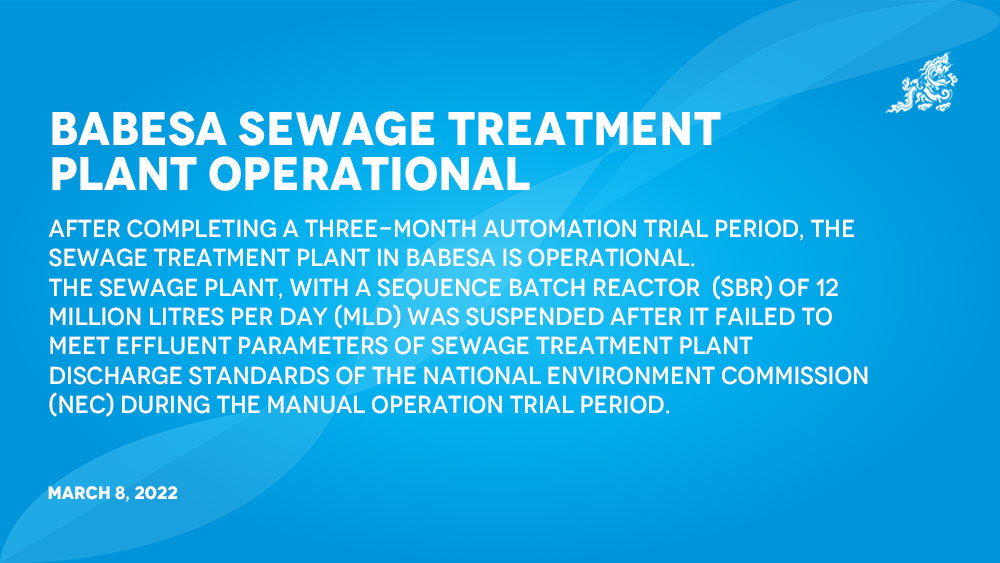Yangyel Lhaden
After completing a three-month automation trial period, the sewage treatment plant in Babesa is operational.
The sewage plant, with a sequence batch reactor (SBR) of 12 million litres per day (MLD) was suspended after it failed to meet effluent parameters of sewage treatment plant discharge standards of the National Environment Commission (NEC) during the manual operation trial period.
Effluent parameters determine the quality of sewage water that can flow into the river.
The contractor, Techno Fab Engineering Limited, has been working to fix the plant as the contract term states that the plant would not be fully commissioned if the effluent parameters are not met within three months after completing the plant construction.
The contract term also mandates the contractor to rework to meet the effluent parameters and undertake the plant’s operation and maintenance for the next five years.
Meanwhile, the automation trial period started on October 22 last year.
An automation engineer from India arrived in August and worked on automating the plant for two months and data from the plant was shared with a chemical engineer in India daily for remote assistance.
A thromde official said that since the plant was run round the clock with automation system, the plant is functioning at its optimum level, which was why the sewage could be treated. “The readings from the plant are within the range of NEC’s standard.”
He said that the plant failed to treat sewage during the first phase of the trial period with manual system as there was no one to run the plant during the second nationwide lockdown. “ During the ongoing lockdown, six people are working an eight-hour shift to operate the plant round the clock.”
According to the official, they also have backup power for electricity outages to run the plant. “The contractor will also operate the plant for five years.”
The plant has six cycles to treat sewage.
In the first cycle called static fill, SBR is filled with raw sewage. In the second cycle called aerated fill, the plant is supplied with oxygen for bacteria to respire. In the third cycle called react, bacteria break down sewage. In the fourth cycle called settle, the treated sewage settles down. In the fifth cycle called decant, the plant filters water out from the SBR and water is treated with chlorine before it flows in the river. In the last cycle called idle, the remaining sewage is settled until raw sewage is filled again in the SBR and cycle continues.
Thromde official said that they were in constant touch with a chemical engineer for remote assistance regarding how long each cycle should last and how many cycles are required to run the plant to treat sewage daily based on data from the plant. “We are looking forward to calling chemical engineer in the country when the situation gets better but until then, we will be seeking remote assistance.”
The plant is treating sewage of lower Changangkha, core area, Changzamtog, Changbangdu, Lungtenphu, Simtokha, and Babesa.
About 13,000 residential units are connected with the plant.
The thromde official said the plant received 8.5 MLD of sewage at present. “When new buildings are constructed in the areas, they will be connected to the plant. The plant has the capacity to cater to more households.”


